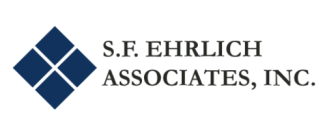
The SECURE Act - What does it mean to you?
By John Zeltmann
December 24, 2019
Congress recently passed one of the most significant pieces of retirement planning legislation in a decade: The Setting Every Community Up for Retirement Enhancement Act ("the SECURE Act"). The new law changes how we plan for our clients' financial lives, so we thought it would be helpful to summarize the key implications.
Some highlights:
Extending IRA required minimum distribution age - The age at which taxpayers are required to take distributions from IRAs and other retirement plans has been pushed from 70 1/2 to 72. This change takes effect on January 1, 2020, so if you turned 70 1/2 in 2019, you're required to continue taking minimum distributions. For anyone who reaches age 70 1/2 after January 1, 2020, you now have a new start date for your distributions.
Planning implications:
- Roth conversions - For anyone who is retired, earning relatively low levels of income, and younger than 72, you just collected two more years in which you may benefit from a series of small Roth conversions. Given the demise of the Stretch IRA (more on that below), an account that grows tax-free just became a lot more valuable.
Elimination of age limit for IRA contributions - Previously, workers over the age of 70 1/2 weren’t allowed to make IRA contributions. The recently passed legislation eliminates this restriction. As more Americans work into their later years, this change makes sense.
Death of the Stretch IRA - One of the most notable changes introduced by this legislation, the "Stretch IRA" is dead. Under the old law, non-spouse beneficiaries of an IRA had the option to draw down the balance of the inherited account over their life expectancy, spreading the tax liability over the recipient's lifetime. This feature of IRAs made them terrific estate planning vehicles. Under the new law, non-spouse beneficiaries of an IRA will be required to draw down the account (paying the associated income taxes) within 10 years. During that 10-year window, withdrawals can be taken either throughout the 10-year window or as a lump sum in year 10; however, they'll have to consider the tax implications (i.e., what makes more sense: spreading the distributions evenly over 10 years or distributing a lump sum in year 10?).
Planning implications:
- Check beneficiaries and update estate plans - Since IRAs are no longer eligible to be distributed over a non-spouse beneficiary's lifetime, now is a good time to check in with your estate planning attorney to see how the recent legislation impacts your wills and overall estate plan. If you'd like us to coordinate the discussion, we're happy to do so.
- Roth conversions - With the forced taxation of inherited IRAs being significantly accelerated, any opportunity to convert funds from a pre-tax IRA to Roth should be considered, especially if done when the taxpayer is in a relatively low tax bracket. We frequently coordinate such discussions with accountants, so please let us know if you want to learn more about this opportunity.
Annuities in employer-sponsored retirement plans - Participants in 401(k) and other retirement plans will likely see a new addition to their investment menu over the coming years: annuities. Under the new law, when adding an annuity to a retirement plan, only a base level of due diligence is now required by the plan fiduciary to protect themselves from liability if the annuity provider goes bankrupt. (Prior to the new law, the plan fiduciary would have been liable.) Whether annuities serve as attractive investment options in a 401(k) plan will likely be a function of the underlying costs associated with the product.
529s - Under the new legislation, up to $10,000 of 529 funds can be used to pay down student debt. Unfortunately, the $10,000 is a lifetime limit, not annual. If the plan beneficiary has siblings with student debt, however, an additional $10,000 per sibling can come out of the 529 account to cover those liabilities.
Qualified Charitable Distributions - Even though the IRA required minimum distribution starting age was pushed back from 70 1/2 to 72, the age at which you can begin making Qualified Charitable Distributions (QCDs) remains at the day you turn 70 1/2. Also, certain provisions were put in place to prevent against the abuse of funding IRA contributions and processing QCDs in the same year, so extra care will be required when using this strategy. (There’s a limit, but QCDs are not reported as taxable income on your tax return.)
Aside from this legislation being a big win for the insurance companies (by making it easier to get annuities into employer-sponsored retirement plans), it's tough to identify clear winners and losers. The heavy lifting - restoring solvency to Social Security/Medicare/Medicaid as well as the federal agency that backs pension plans - is yet to be addressed. In the meantime, the changes listed above give us a chance to determine whether there are any planning opportunities for our clients, which we'll be doing in the coming months.

